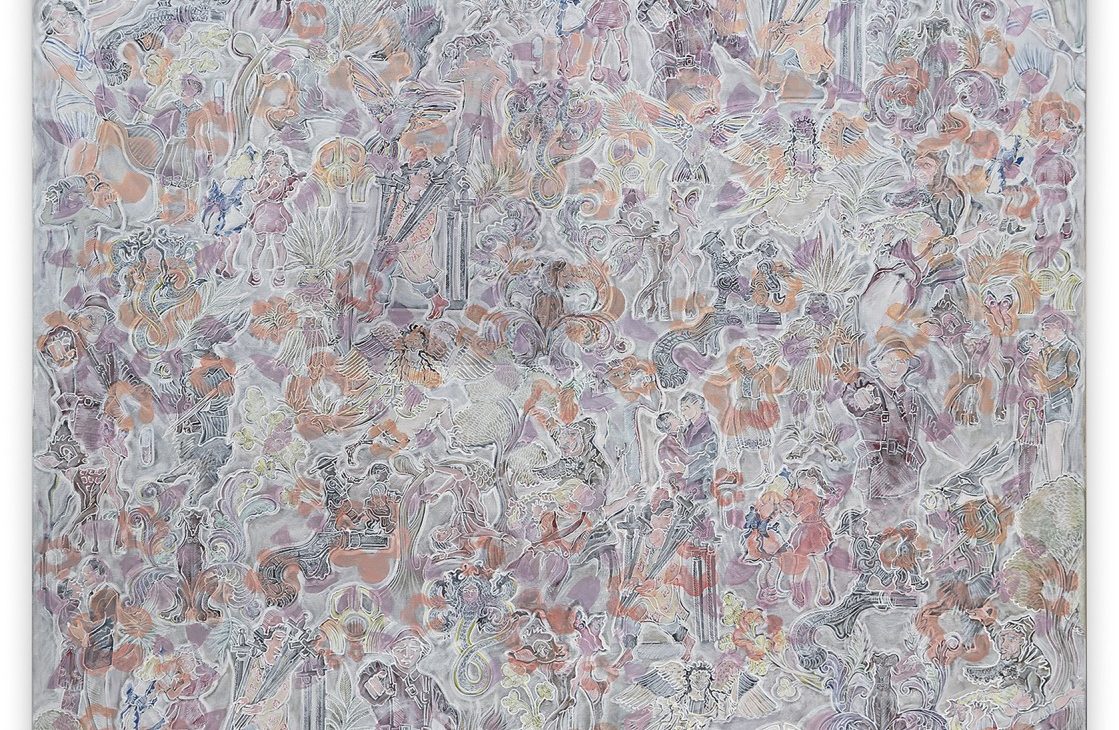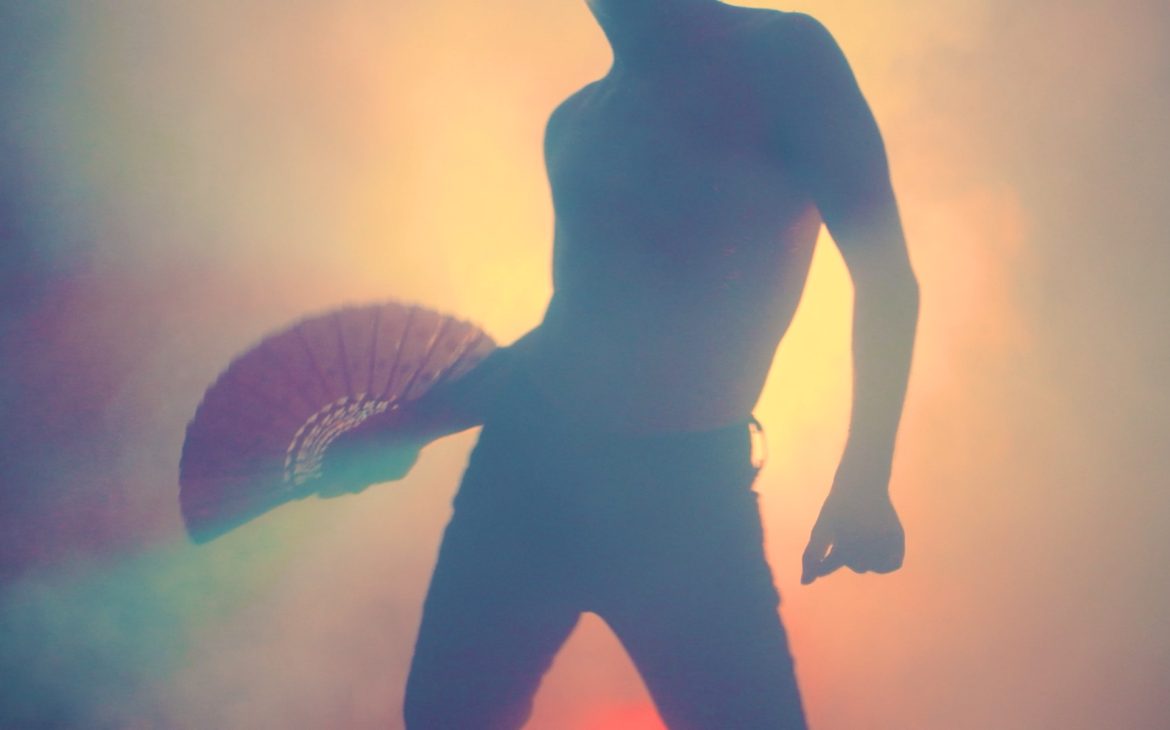Daniel Moldoveanu’s exhibition, titled “The Whatever Moment”, made a strong debut, with the presentation of the original curatorial concept of a so-called “inconsequentiality”. The event hosted by the Sabot exhibition space, located on the fourth floor of Centrul de Interes in Cluj-Napoca is an experience not to be missed.
“It is when inconsequentiality becomes inconsequential that language is lost. Time becomes whatever-moment — the moment as neither this nor that moment, but as the momentary as such, the unqualified course of things towards nothingness. And the whatever-moment is silent”. This is how the exhibition received its name, according to the curatorial statement authored by Ulysse Carrière-Bouchard.
It is not only the concept of the absence of meaning, but the theme of becoming, the relationship between self and otherness, and different aspects of queer identity that are explored in the film, on loop, “Flickering”, 27:00:00, (2020/2021).
The clip is made with the help of the production manager Jakub Cygan and technical assistant Fedir Shurkal. The artist states that “Flickering” features a conglomeration of diary-like shots showcasing a protagonist displaying his glitter-covered torso in close-up, while dancing, and draped in a palette of pinks and shades of purple, inspired by the “lux-gen-Z aesthetic” of Euphoria (2019), the infamous series directed by Sam Levinson.
Over these dialogue-free scenes, images of characters caught in typically institutionalized interactions are interposed, in environments such as the hospital, the school, the workshop, the sauna, and the gym. Extremely intimate, these deeply biographical scenes are inserted between excerpts from “The Paradoxes of CHANEL – Inside CHANEL”, a commercial campaign.
Juxtapositioned alongside all of these, are images of cells of the lymphatic and immune systems, captured under a microscope. They are used to flesh out the alert pacing to an oscillation between different worlds, meant to destabilize the border between the performative and the real.
Contributing to the continuous back-and-forth between these worlds is a collage of musical elements chosen for the film. These are either sequences taken from the audiobooks “Faserland” by Christian Kracht and J.D. Salinger’s “The Catcher in the Rye”, or excerpts from a YouTube commentary on “The Culture Industry: Enlightenment as Mass Deception,” a chapter part of a larger work, a philosophical treatise written by Max Horkheimer and Theodor Adorno. In addition to these, the artist chose to include sequences of The Great Gatsby (2013) directed by Baz Luhrmann, as well as other fragments of ready-made monologues, interviews, and samples of classical and techno music.
At the same time, the physicality of the biological body, as portrayed in the scenes of “Flickering”, is also explored in Moldoveanu’s presentation of his mode of artistic production used in the accompanying canvases of the exhibition. The film, therefore, commits to highlighting the meta-artistic dimension of the artist’s work, through which the particularities of his creative process are revealed in the subjects selected for the five paintings in acrylic, correction pencil, and white marker.
These artworks supplement “The Whatever Moment” installation, a collection of UV prints of low opacity still frames from “Flickering”, in black and white, added on top of the finished surface of the canvases.
Furthermore, the clues needed for a complete immersion in the universe created by Daniel Moldoveanu, a world that is deeply personal and intentionally emptied of meaning to the point of “banality”, to a “humdrum”, are also achieved with the help of the artist’s choice of symbolic insertions in the paintings. Among them, the presence of Indian characters reminiscent of the positions drawn in the “Kama Sutra”, the ancient collection of Sanskrit texts about sexuality and the emotional connection between lovers, stands out. Along with these, symbols of Roman columns obsessively occur throughout the works, framed by Egyptian deities, coupled with animated characters, including the White Rabbit from “Alice in Wonderland”.
Furthermore, this landscape is scattered with male characters that allude to iconography particular to the BDSM community but also features women caught dancing or playing tennis. The space between these characters is filled with plant-like elements, stylized flowers and palm leaves, cat heads, winged beings, and last but not least, the typical image of pierced heart tattoos, all of which completely cover the surface of the canvases.
The exhibition is still on view until February 3rd.
Daniel Moldoveanu is a Romanian artist and essayist born in 1999, in Constanța, Romania. His artistic practice includes painting, photography, film, mixed media, and text. The artist is a graduate of the Fashion Institute in Vienna and is currently enrolled at the Humboldt University and the University of Fine Arts in Berlin. He lives and works mainly in Berlin, Germany.










